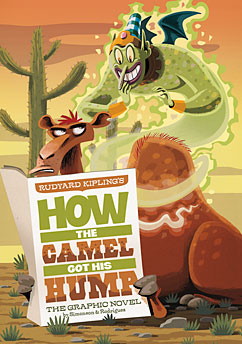
Review: Two Rudyard Kipling Tales Adapted for Comics
I love a good folktale, fairy tale, fable, and myth. So I was excited when I opened a recent box from Capstone and pulled out two of their new graphic novels, both of which are adaptations of classic Rudyard Kipling Just So Stories. While I haven’t loved all of Capstone’s “safe” and educational titles in the past, this series had something working in its favor — an artist whose bright colors instantly caught my eye and pulled me into his work.
 Rudyard Kipling’s How The Camel Got His Hump: the graphic novel
Rudyard Kipling’s How The Camel Got His Hump: the graphic novel
Adapted by Louise Simonson and illustrated by Pedro Rodriguez
Grades 3-6; Ages 8-12
Capstone, 2012, ISBN 978-1-4342-3202-1
40 pages, $16.99
ADVERTISEMENT
ADVERTISEMENT
Rudyard Kipling’s How The Leopard Got His Spots: the graphic novel
Adapted by Sean Tulien and illustrated by Pedro Rodriguez
Grades 3-6; Ages 8-12
Capstone, 2012, ISBN 978-1-4342-3223-6
40 pages, $16.99
Rodriguez’s art is definitely the star of this show. He saturates his images with color, sticking with the tans, browns, and other earth tones which are appropriate for the settings of his books, India and Ethiopia, but also adding in brighter colors to highlight fantastical parts of the stories. His art style has an animation quality to it and the cartoon characters seem to move and breathe, despite their two-dimensional nature. The silly qualities of the art pair nicely with the over-the-top nature of the fables. Rodriguez avoids overstating, only using narrative text boxes as needed. In How the Leopard Got His Spots, he even allows his characters to break the fourth wall some, speaking to the narrator and audience. This sly, winking nod to the intelligence of the reader ages the book up slightly, giving it some older elementary school appeal. How the Camel Got His Hump does not have the same element, but Simonson’s adaptation keeps the formal, repetitive feel of a traditional folktale, a nice touch that will comfort fans of traditional stories.
Capstone does Rodriguez justice by attractively packaging the books as “research guides” assembled by Rudyard Kipling. The books open with research notes and close with Kipling’s “conclusion.” This gives the creators the opportunity to introduce characters and settings, as well as reinforce the main point of the stories, while avoiding the dry, educational feel that nonfiction comics sometimes have. It also means that elements such as the glossary and the discussion questions — which Capstone always includes with their titles — feel like more natural parts of the book, rather than attempts to insert homework into what should be fun.
Both adaptors do a good job of toning down any dated elements of Kipling’s stories. There is one jarring moment in How the Leopard Got His Spots when the Ethiopian hunter decides to “change his hue” so that he will better blend in to the forest surrounding him. The initial picture after his transformation at first seemed almost too close to old images of blackface performers to be comfortable, but upon reflection I wonder if that is because, sadly, dark-skinned characters are simply not as common in comics. And the transformation is treated with dignity. Leopard admires the hunter’s new look, telling him “You are a beauty! Your new skin suits you very well.” Overall, I was happy that there were no white faces to be seen in either volume, beyond Kipling’s face in the “research notes.” That is a situation which is all too rare and can be frustrating for librarians looking to build a comics collection which features characters who look like the patrons they are serving.
Teachers will want to make sure they help students understand the fictionalized elements of the adaptations. For example, in How the Camel Got His Hump, a map at the beginning shows readers the location of India based on Pakistan, which was, of course, not around when Kipling wrote his tales. But that is one minor quibble about an otherwise attractive and engaging series. There is a lot of opportunity for classroom use of these titles. Beyond exploring the themes of hard work, cooperation, and inner vs. outer beauty, teachers can use these in science classes to talk about how animals really developed, contrasting the truth with the folklore presented here. The end of each story also features a poem by Kipling, making these perfect for language arts classes as well.
I did not get a chance to review the other two titles in the series — How the Elephant Got His Trunk and How the Rhinoceros Got His Skin — but as Rodriguez is also the illustrator for those two, I am willing to bet that they are as well done as these two.
This review is based on a complimentary copy supplied by the publisher. All images copyright © Capstone.
Filed under: All Ages, Graphic Novels, Reviews
About Snow Wildsmith
Snow Wildsmith is a writer and former teen librarian. She has served on several committees for the American Library Association/Young Adult Library Services Association, including the 2010 Michael L. Printz Award Committee. She reviews graphic novels for Booklist, ICv2's Guide, No Flying No Tights, and Good Comics for Kids and also writes booktalks and creates recommended reading lists for Ebsco's NoveList database. Currently she is working on her first books, a nonfiction series for teens.
ADVERTISEMENT
ADVERTISEMENT
SLJ Blog Network
The Moral Dilemma of THE MONSTER AT THE END OF THIS BOOK
Cover Reveal and Q&A: The One and Only Googoosh with Azadeh Westergaard
Parsing Religion in Public Schools
ADVERTISEMENT

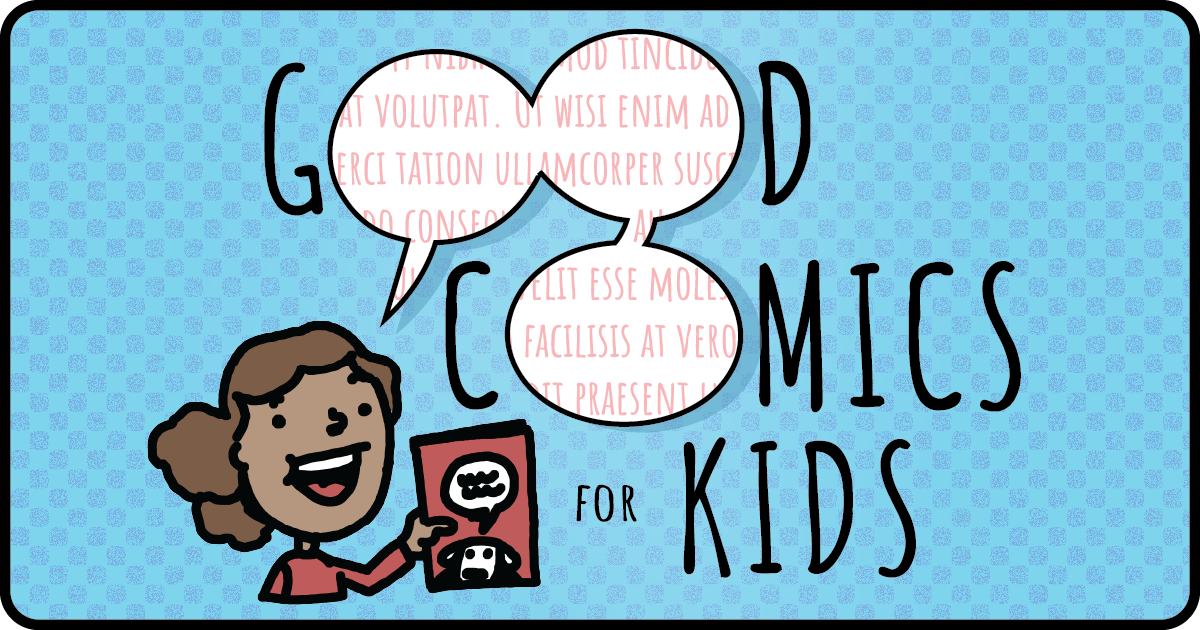

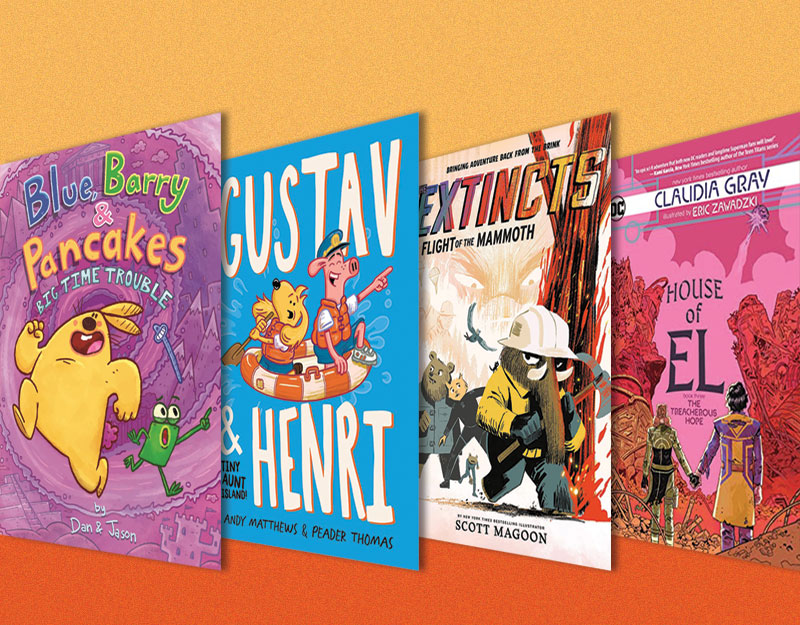
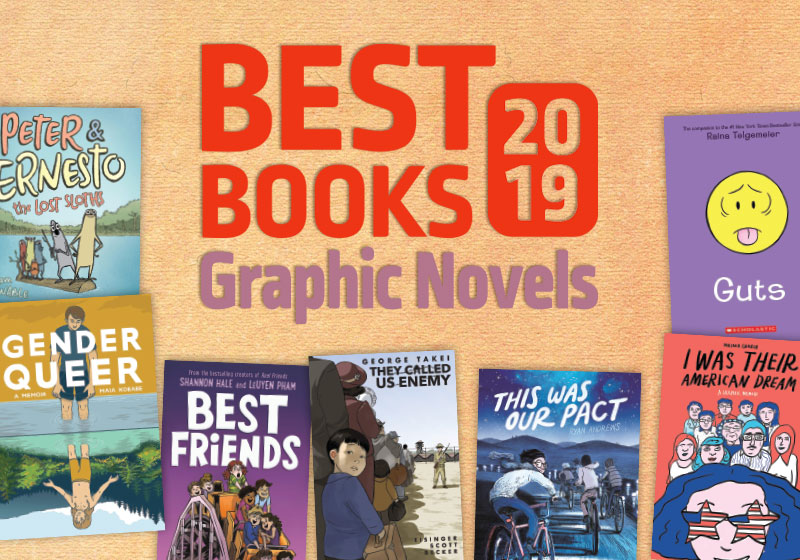
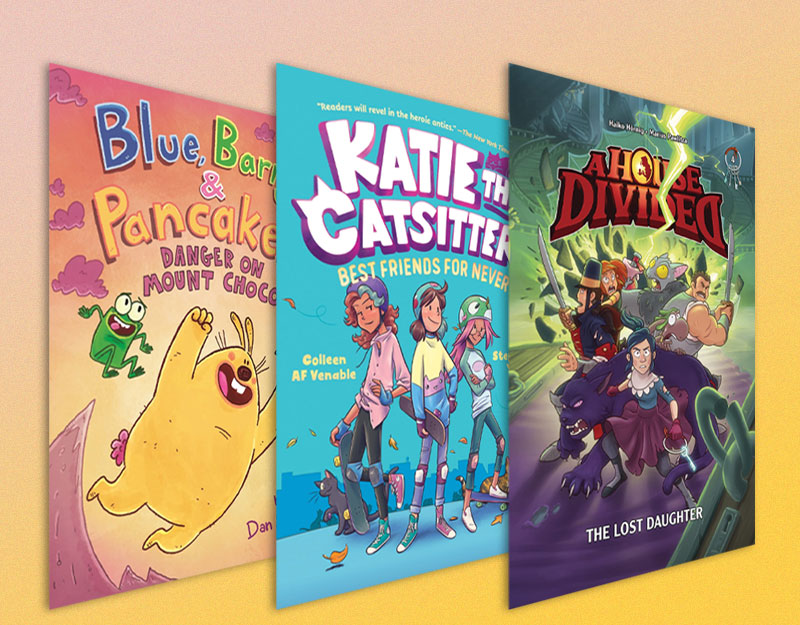

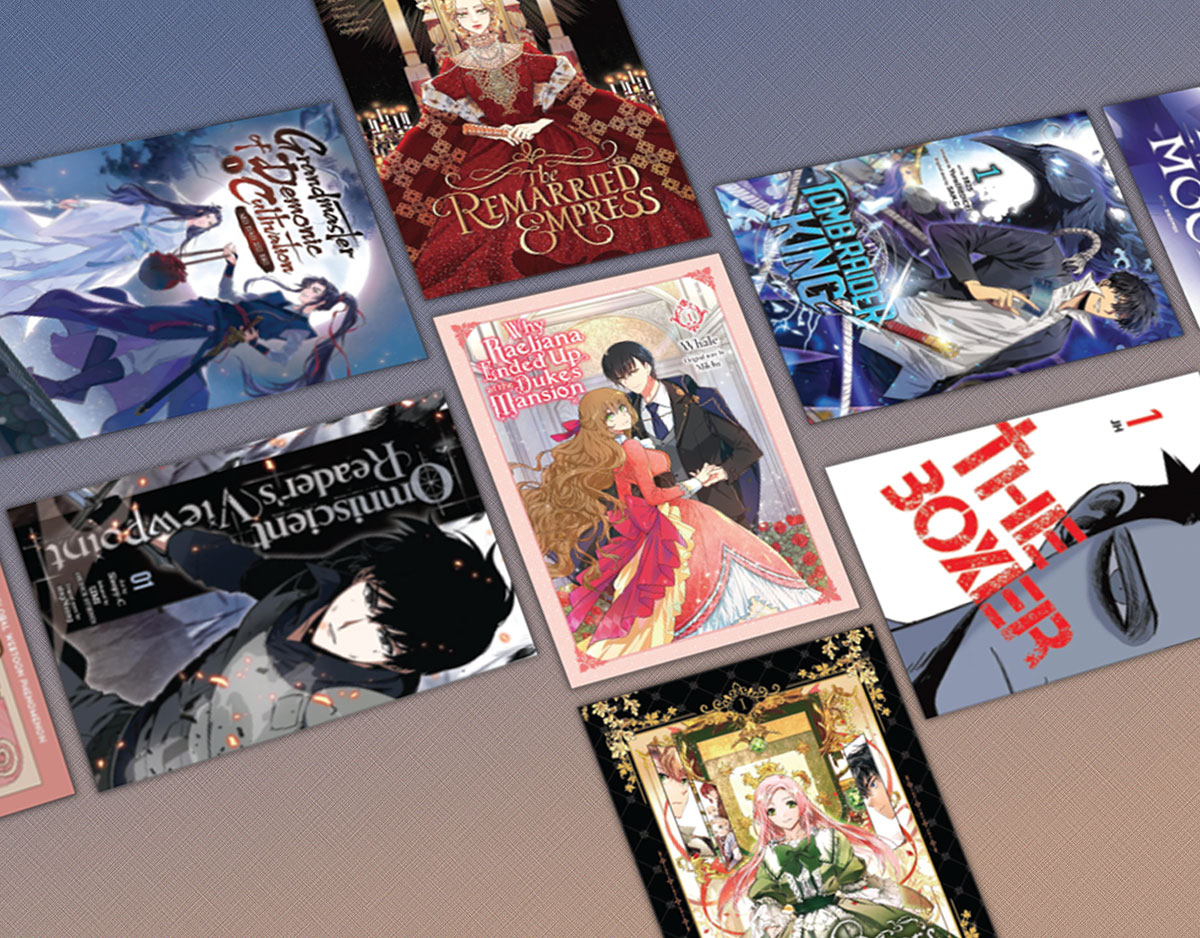
I received review copies of the Kipling set and took the books to school; my Lunch Time Book Club kids (grades 3-5) have been enjoying them all! These kids also had no clue about the original stories or about Rudyard Kipling, so if nothing else, the books have served as an introduction. The students were passing the books around the table, reading while eating their lunches; last week, one of the 4th graders decided she wanted to take two of them home to read.
Oh, good! I’m glad to hear that your students enjoyed them. I really did like the art a lot. I’d love to see more from him.
Tulien and Rodriguez did a fantastic job, I love this adaptation of Kipling’s work and agree that the modern elements and racial sensitivity can go a long way in relating to a wider range of young readers.